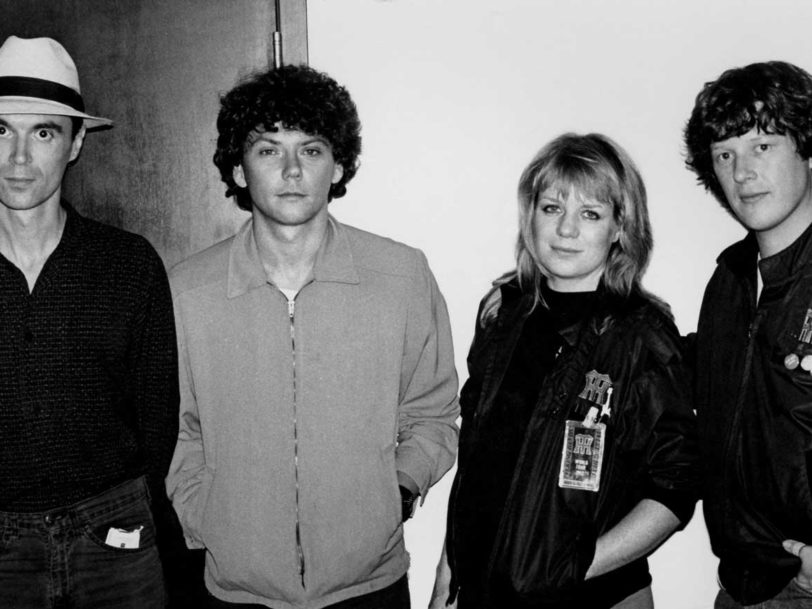Formed in New York City in 1975, Talking Heads – David Byrne, lead vocals and guitar; Chris Frantz, drums; Jerry Harrison, keyboards and guitar; Tina Weymouth, bass – quickly established themselves apart from the punk scene of the day, both in image (preppy and clean-cut) and sound (angular, but with a deep appreciation of soul, funk and disco). Over the course of eight studio albums they established themselves as one of the most innovative groups of the day, forever forging forward with new sounds and working methods. They announced their split in 1991 (though had already embarked on individual solo careers), leaving behind an endlessly inspiring and fascinating body of work. The best Talking Heads songs have informed the music of countless acts since.
Listen to the best of Talking Heads here, and take a look at our 20 best Talking Heads songs, below.
20: Uh-Oh, Love Comes To Town (from ‘Talking Heads: 77’, 1977)
The first song from their debut album, and an early sign that the best of Talking Heads would set the group apart from the CBGB crowd. Rather than crashing in with the sort of punky barrage you’d expect from a NYC debut in punk’s breakthrough year, Uh-Oh, Lover Comes To Town sees drummer Chris Frantz and bassist Tina Weymouth quickly establish a light, swaggering groove with a nimble bassline owing a debt to Motown great, James Jamerson. If that baffled the punks, instrumental passages lit up by steel drums would have had their heads spinning. Meanwhile, David Byrne’s voice and idiosyncratic worldview are established from the off, as he sing-yelps a lyric concerned with the incapacitating effects of love. Already, he sounds like nobody else.




